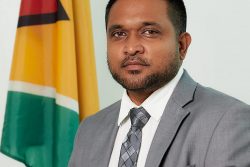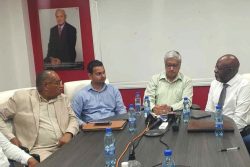Dear Editor,
Thanks for the names and locations of the 172 young children who excelled in making the top 1% of students in the recently concluded National Grade Six (Common Entrance) Assessment for 2023 (SN, July 08). I extend congratulations to the children first, teachers next, then parents, and with a word of recognition for the efforts of the Ministry of Education. Well done, all around, with an appreciative nod for the improvements in some core subjects, such as Math and Sciences.
Taking a closer look at the close to two pages of names, schools, and regions, a few things struck me. The first is that over 90% of the 172 children came from three places/regions. Georgetown recorded over 55% of the young luminaries, Region 4 another 20% plus, and Region 3, approximately 17%. Region 10 claimed about 5% of the success in the top one percent, with a few high performers from Regions 2, 5, and 6. The second thing of note was that the huge population centers were heavily represented. Given population distributions, some of this is traditional, much of it expected. Facilities and more are present, so also are resources and access, as in proximity to ideas, centers, and assistance. The third aspect of SN’s list of names, and it was a tough one to absorb, was that there was not a single student in that group of highfliers from Region 1 or 7 or 8, or 9. This is revealing that four of our remote regions are apparently lagging the frontrunners.
Even as I make accommodation for population spread and relative scarcity, the challenges of travel, the support structure that may, or most likely not be the equivalent of the well-performing regions, and the necessity for all-important finances, this is still a hard pill to wash down. It is easy to point fingers at officialdom, but I do not go there, for no child’s interest is served. I don’t even wish to think of what has happened recently, or try my hand at figuring out the combination of circumstances that yields this kind of paltry educational harvest from those isolated places. There has to be more than enough young minds present for at least one child to have been present in the SN list. It would be delightful if the reality beneath the public one percent grouping is that there were many who made it into the top 5 or 10 percent of NGSA students in Guyana. We need some of more our young ones from our hard pressed communities to make it into the top schools in this country, so that they can be positioned to think of, and actually succeed at, getting into higher education.
As our city lights dazzle with their pictures plastered in the press, our country pride must also be studied to determine what is needed to make a difference. Or, how the approach in Georgetown and its extended outskirts either can be replicated in remote regions, or how it should be adjusted to bring about the results needed. I have some understanding of the prevailing economics, along with the sociology of which so much has been spoken. Notwithstanding those, I still firmly believe that some soul searching is called for at the heights, some returning to the drawing boards for those distant spaces. If the realization comes that the drawing boards need to be discarded because they do not apply or work, then there must be the boldness to venture into pioneering territory. The first objective would be to ensure that the children who have the aptitude and industry are not left behind. What could be more caring than such efforts? Perhaps, a radical overhaul is out of the question, but some adjusting and tuning looks mandatory to me. Guyana needs all of its children from all of its various quarters to be present to answer the rollcall of honor when such times come. The time is now, the journey has already begun, and the clock is ticking.
Sincerely,
GHK Lall





